
 Playing 3-Chord Zithers |
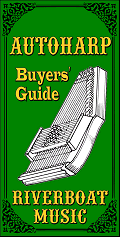 |
| ||||||||||||||||||||||||||||||||||||||||||||||||||||||||||||||||||


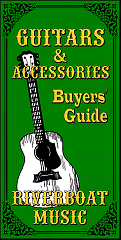
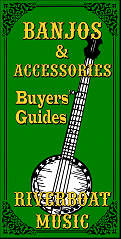
|
Playing 3-Chord ZithersThis article is an alternative to our article "Beginning Guitar Zither," which discusses the most common playing styles for zithers with groups of chord clusters closest to the player and melody strings further out. This article contains speciic information that does not necessarily apply to all guitar zithers. In fact, this article applies most specifically to the three-chord guitar zithers with 21 melody strings that were made or designed by the Hopf family in Germany between 1930 and 1980. They can also be identified by having C#, F# and G# added to an otherwise diatonic scale. We show four examples below. 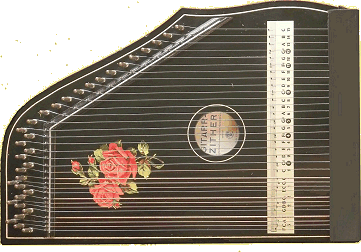 
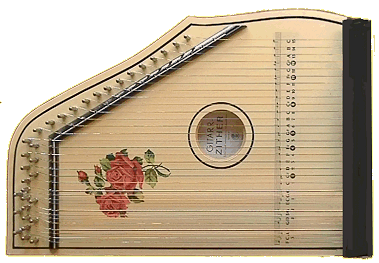 
Since 90% of the three-chord guitar zithers that come available every year fall into this category, you're probably safe. Read on. Three-chord guitar zithers are essentially scaled-down versions of the 5- and 6-chord zithers that were popular between 1900 and 1930. Because of their low cost, they became very popular in the mid-1900s, often marketed as "children's zithers" or "Folk instruments" (though both descriptions miss the mark, for different reasons). Although they haven't been made in decades, thousands are still around, and they're not hard to come by in good condition.
It's not hard to figure out why so many of them show up after fifty years with a week's worth of wear on them. Most of them show up without the song sheets today, which is why we scanned the ones we could track down and provide printable versions for you. "Rosen," "Jubel-Tone," and "Musima" Zithers - Why So Many Brand Names? - Most 3-chord zithers you come across were built or at least designed by the Hopf family, who have made zithers and autoharps in Bavaria since the early 1900s. The Hopf family's zithers were identifiable by a rose decal ("Rosen") until soon after 1972. That's when the East German government demanded that they lose the rose and rename their brand. Most zithers went to a wildflower decal that is still popular today. Brands from that era are typically "Musima," the GDR industry name or "Jubel-Tone," an old name that was revived for instruments that were going to be sold in non-Communist countries. Why Three Chords? Hundreds of thousands of Pop, Country, Folk, Bluegrass, and even Rock songs can be played with just three chords. Frankly, the 5-, 6-, and 7-chord zithers are also made for playing 3-chord songs. They just let you play 3-chord song in other keys. If a song uses more complex chords, you probably can't play it on a 5-chord zither either, so don't feel like having "just" three chords is a major restriction. Besides, you can transpose any 3-chord song to the key of C, which is what these zithers use. You might not be able to sing the song in that key, but that's not the zither's fault. :-) True "Children's Zithers" - One similar class of 3-chord zithers was also made during this era. If you see a red 3-chorder with another decal, say a clown or children singing, it may be a smaller version with fewer strings (say, 15 melody strings instead of 21). The instructions on this page won't be as useful for those. The two-chord version, if you come across one, really is a toy. I assume both those versions came with song sheets as well, but I have never recovered any. Reviving a Guitar ZitherTry to find a zither whose face hasn't warped or split, and whose strings aren't too rusty. Not saying that you can't rebuild or restring a badly damaged zither, but you deserve to start on one you can play without serious restoration.Keep the Strings if You Can - If you come across a zither with most or all of the strings, don't replace the strings at first. They're made like piano strings, and will last decades. Later you may decide to replace them, or you may decide to put that money toward an upgrade. For now, if you just need a few replacements, you can go to a music store whether the guitar tech has a micrometer and buy appropriate guitar strings as a temporary fix. If you have a source for the right gauge of piano wire, that's even better. Unfortunately I can't find a chart telling you what gauge you need for each string of your zither. The best you can usually do is use a good micrometer to measure the strings on either side of the missing string and choose a gauge between them. Cleaning - German-built zithers generally have a thick layer of varnish, so you can use gentle cleaning products on them. If the problem is just dust, a bit of felt glued to a paint stick can do the job in a hurry. More likely, things are a bit gummy. You can use a thin damp rag over a ruler or some such to get under the strings. Try not to get the water or cleaning product on the strings if you can avoid it. If your zither has an open grain or badly damaged finish, a guitar polish might be your best bet. Also, some zithers have unprotected paper, either the note name strips or the gingerbread circle around the sound hole, so be careful not to get those wet. To clean the bits around the bridges and tuners, you'll need Q-tips or a similar product. We have a video about cleaning a related instrument - autoharps - here. Tuning - Most zithers need tuning wrenches that are the same as those used on autoharps. If you have a piano, it might be easier to tune to that first, then use a digital tuner for fine tuning - many digital tuners will have trouble properly identifying strings that are badly out of tune. If you don't have a digital tuner at first, you can probably download a chromatic tuning "app" for your smartphone. For a zither that has not been tuned in some time, you should consider wearing eye protection and expecting to break at least a string or two.. Whatever you do, don't hold it close to your face while tuning. Playing 3-Chord Guitar ZitherThe expectation is that you will play the chords with your left hand and play the melody strings with your right hand.Left Hand -The chords on guitar zithers are arranged with the lowest note of each chord farther away from the player. So for the chord to sound "right," (with the bass note sounding first, you play the chords with a pulling motion, using a fingerpick on the middle finger of your left hand.
Some people who have killer fingernails (or artificial nails) don't use the pick, but I have to, since the nails of my left hand have to be short for guitar and banjo playing. As one other alternative, some folks who like to play zither with the lower bridge up against their bellies and the instrument stretching out in front of them may find that a thumbpick on their left thumb is helpful for strumming the chords. Unfortunately, that requires a "left-handed" thumbpick which is harder to come by. After you play a chord, it will ring for several seconds, which can cause dissonance when you play the next chord. Zither players get around this by gliding the other fingers and thumb of their left hand lightly over the strings of the previous chord. They don't deaden the old cord completely, they just tone it down so it seems to fade away naturally. In videos it almost looks like they're "petting" those strings, stroking them in the opposite direction - from the high strings down to the low strings. So their left hand is continuously going back and forth, as they use their middle finger to pick one chord and glide their other fingers back over the previous chord. An Austrian zither player, Etienne de Lavaulx, explains this and other techniques in this video. If you want to practice just the left hand, you can use some simple song sheets. If you know the song, sing it to yourself as you play each chord. Try practicing these or other 3-chord songs, just strumming the strings while you sing. The more you play, and the more songs you play this way, the more natural it will become. . Right Hand - Most zither players use a flatpick to pick individual melody strings. This is the same kind of flatpick guitar or mandolin players use. As an example of a simple song, "Boil that Cabbage Down" uses only four notes in the melody. Better yet, on a three-chord Rosen, Jubel-Tone, or Musima, the strings you need to play are all next to each other, except for the last note.  Once you can pick out the melody, add the chords by stroking each chord wherever its name appears above the staff. So, you'd stroke the C chord on the first note, the F chord on the fifth note, and so on.
Clicking on the graphic to the right will give you a .pdf of the song sheet for "Boil That Cabbage Down." Print it at 100%. Your system may warn you that not everything will fit in the printed area. Ignore the warning. Once it's printed, trim or fold it at the dotted lines. Slide it under the strings of your zither until the double line is under the C1 melody string and all the other strings align. (There are two "C1" strings, so be sure the double line is under the first melody string, not the C1 that's part of the C chord.) If the other strings are too misaligned, you may have to doublecheck your print settings. Use the guide to pick the melody with a flatpick in your right hand. With your left hand, strum the chord as indicated each time the letter C, F, or G appears. If you've never heard "Boil That Cabbage Down," you may find it easier to try a song you must know by now - Mary had a little lamb. Again, the factory never supplied song sheets for this song, either - go figure. Our song sheets have several features that the original song sheets don't have, including lines representing the strings and the note names on the top and bottom of each string. Hopefully, this will help you learn what notes you're playing and not just learning the tune by rote. Using Song Sheets on Other Zithers? By the way, many 5-chord Hopf zithers of this era also use the same melody string arrangement - a diatonic scale to which F#, C#, and G# have been added. I don't have one onhand so I can't test our song sheets against them, but they might work with a little rescaling. Our song sheets definitely will not work with American guitar zithers - Most of them use a different scale that includes Bb. In addition the C. Robert Hopf company, who designed these 3-chord zithers in the first place, has discontinued all guitar zithers that use the partially-diatonic scale the zithers on this page use. All of their current product line are fully chromatic. So the song sheets won't work with them either. That doesn't keep people who have fallen in love with guitar zithers from learning them inside and out, and making beautiful music with them. You can learn a lot on these diminutive instruments, and move upstream later if you want a bigger sound or if you want to play in more keys. Song Sheet Library (So Far)We have obtained several of the original song sheets from zither sets that included boxes and song sheets.We tried putting the note names on a few of them, but some were so complex we gave up and just posted the rest of them as they were scanned in. A few notes about the manufacturers' song sheets.
Vintage Song Sheets to Print Out Here's the list of what we have. If you click on the link, you'll see a printable pdf that you can fold or cut and stick under your zither's strings to play those tunes.
Other Resources
| ||||||||||||||||||||||||||||||||||||||||||||||||||||||||||||||||||
|
All material, illustrations, and content of this web site is copyrighted ? 2001, 2002, 2003, 2004, 2005, 2006, 2007, 2008, 2009,
Note: Creek Don't Rise (tm) is Paul Race's name for his resources supporting the history and music of the North American Heartland as well as additional kinds of acoustic and traditional music. For questions, comments, suggestions, trouble reports, etc. about this page or this site, please contact us.
|
|||||||||||||||||||||||||||||||||||||||||||||||||||||||||||||||||||